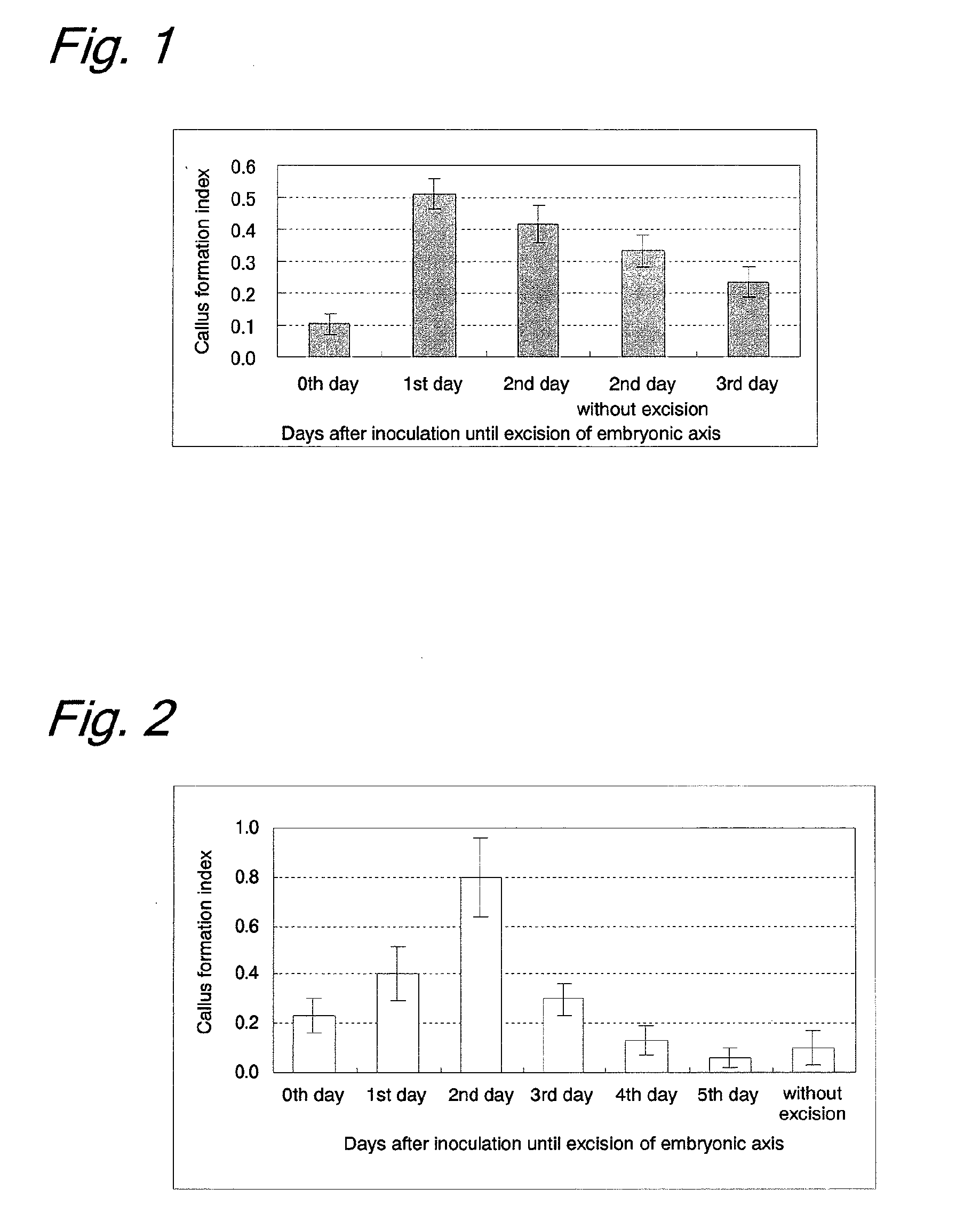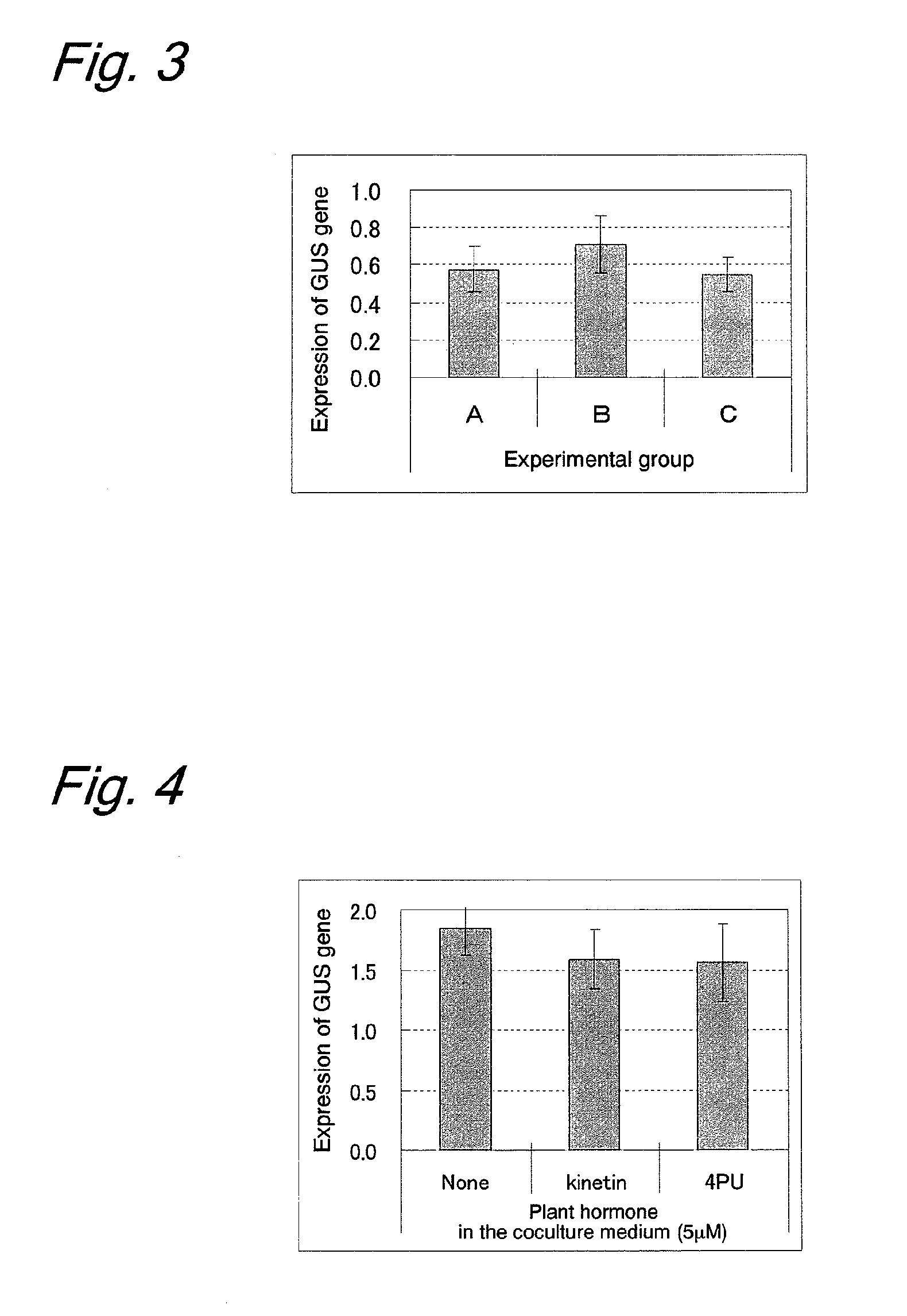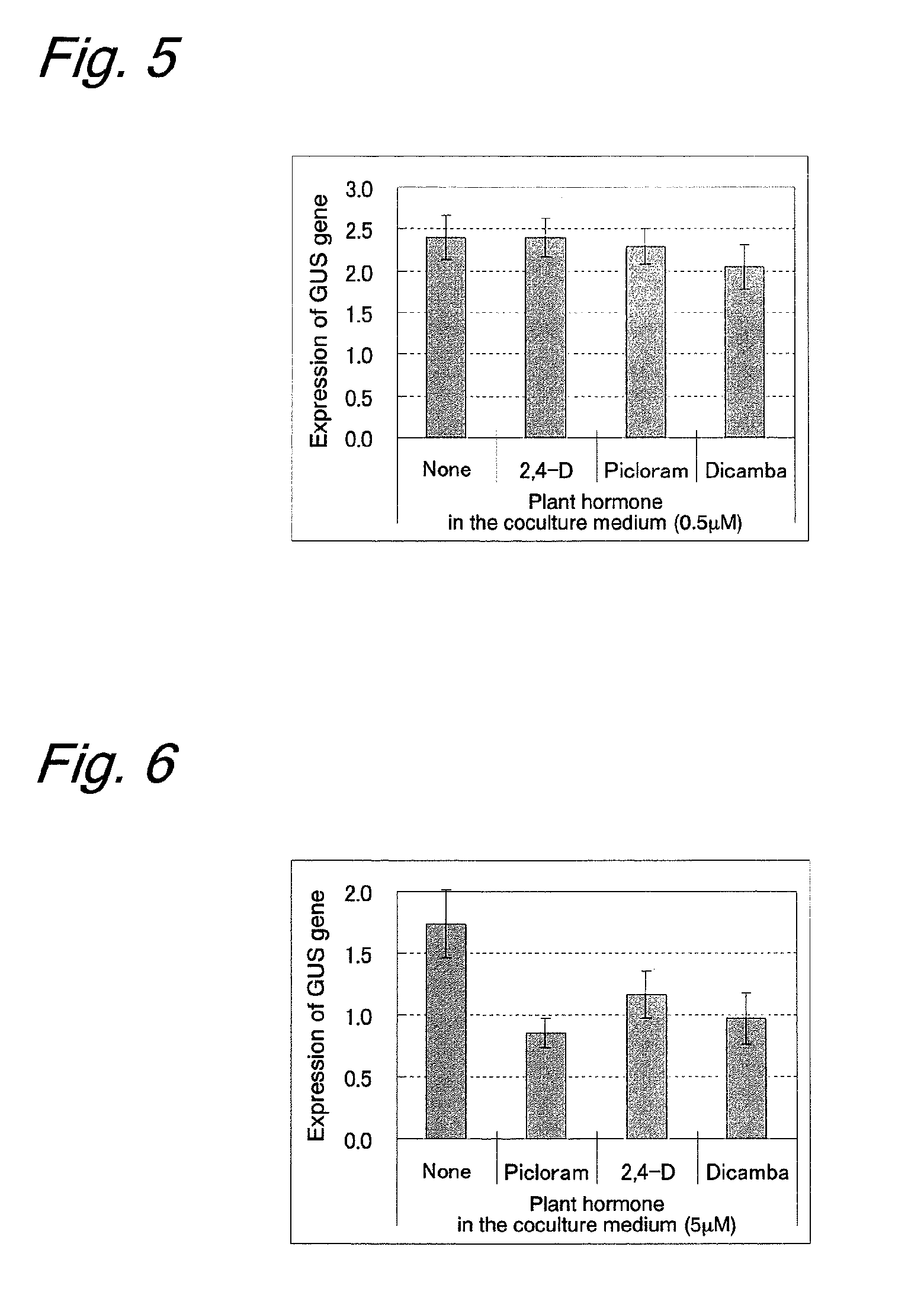method of gene introduction into triticum plant using agrobacterium, and a method of producing transformed triticum plant
a technology of agrobacterium and triticum plant, which is applied in the field of gene introduction into triticum plant using agrobacterium, and the method of producing transformed triticum plant, can solve the problems of less than 5% efficiency, failed to show persuasiveness, and often malformation and sterility of the transformed plant, and achieves high reproducibility, high efficiency, and reduced cost of obtaining the plant
- Summary
- Abstract
- Description
- Claims
- Application Information
AI Technical Summary
Benefits of technology
Problems solved by technology
Method used
Image
Examples
example 1
Effect of Coculture Medium Composition on the Efficiency of Gene Introduction
Material and Method
[0201]Immature embryos (size: 1.5 to 2.5 mm) of bread wheat (variety: Bobwhite) on the 14th day after flowering were aseptically collected and were washed once with an Inf liquid medium (1 / 10 concentrations of MS inorganic salt and MS vitamin, 10 g / L of glucose, 0.5 g / L of MES, pH 5.8). Pretreatment (centrifugation at 15000 rpm for 10 min) was performed for enhancing the gene introduction efficiency. Agrobacterium strain EHA101 (pIG121Hm) (NPL 3) was suspended at about 1.0×109 cfu / mL in an Inf liquid medium containing 100 μM acetosyringone to prepare an inoculation source. The inoculation source was added to the centrifugated immature embryos, and the mixture was stirred for 30 sec, followed by leaving to stand at room temperature for 5 min. The immature embryos inoculated with Agrobacterium were placed onto a Co-Cul coculture medium (1 / 10 concentrations of MS inorganic salt and MS vitami...
example 2
Effect of Excision of Radicle, Germ, and Embryonic Axis on Callus Formation and Efficiency of Gene Introduction (Immature Embryos were Placed onto Coculture Medium Until Excision)
[0206]Material and Method
[0207]Immature embryos (size: 1.5 to 2.5 mm) of bread wheat (variety: Bobwhite) on the 14th day after flowering were aseptically collected and were washed once with an Inf liquid medium (1 / 10 concentrations of MS inorganic salt and MS vitamin, 10 g / L of glucose, 0.5 g / L of MES, pH 5.8). Pretreatment (centrifugation at 15000 rpm for 10 min) was performed for enhancing the efficiency of gene introduction. Agrobacterium strain EHA101 (pIG121Hm) (NPL 3) was suspended at about 1.0×109 cfu / mL in an Inf liquid medium containing 100 μM acetosyringone to prepare an inoculation source. The inoculation source was added to the centrifugated immature embryos, and the mixture was stirred for 30 sec, followed by leaving to stand at room temperature for 5 min. Immature embryos as a control were ino...
example 3
Effect of Excision of Radicle, Germ, and Embryonic Axis on Callus Formation and Efficiency of Gene Introduction (Immature Embryos were Placed onto a Resting Medium on the 2nd Day from the Beginning of the Coculture after Inoculation, Independently of the Day of the Excision)
Material and Method
[0216]Immature embryos (size: 1.5 to 2.5 mm) of bread wheat (variety: Bobwhite) on the 14th day after flowering were aseptically collected and were washed once with an Inf liquid medium (1 / 10 concentrations of MS inorganic salt and MS vitamin, 10 g / L of glucose, 0.5 g / L of MES, pH 5.8). Pretreatment (centrifugation at 15000 rpm for 10 min) was performed for enhancing the efficiency of gene introduction. Agrobacterium strain EHA101 (pIG121Hm) (NPL 3) was suspended at about 1.0×109 cfu / mL in an Inf liquid medium containing 100 μM acetosyringone to prepare an inoculation source. The inoculation source was added to the centrifugated immature embryos, and the mixture was stirred for 30 sec, followed...
PUM
| Property | Measurement | Unit |
|---|---|---|
| size | aaaaa | aaaaa |
| size | aaaaa | aaaaa |
| size | aaaaa | aaaaa |
Abstract
Description
Claims
Application Information
 Login to View More
Login to View More - R&D
- Intellectual Property
- Life Sciences
- Materials
- Tech Scout
- Unparalleled Data Quality
- Higher Quality Content
- 60% Fewer Hallucinations
Browse by: Latest US Patents, China's latest patents, Technical Efficacy Thesaurus, Application Domain, Technology Topic, Popular Technical Reports.
© 2025 PatSnap. All rights reserved.Legal|Privacy policy|Modern Slavery Act Transparency Statement|Sitemap|About US| Contact US: help@patsnap.com



